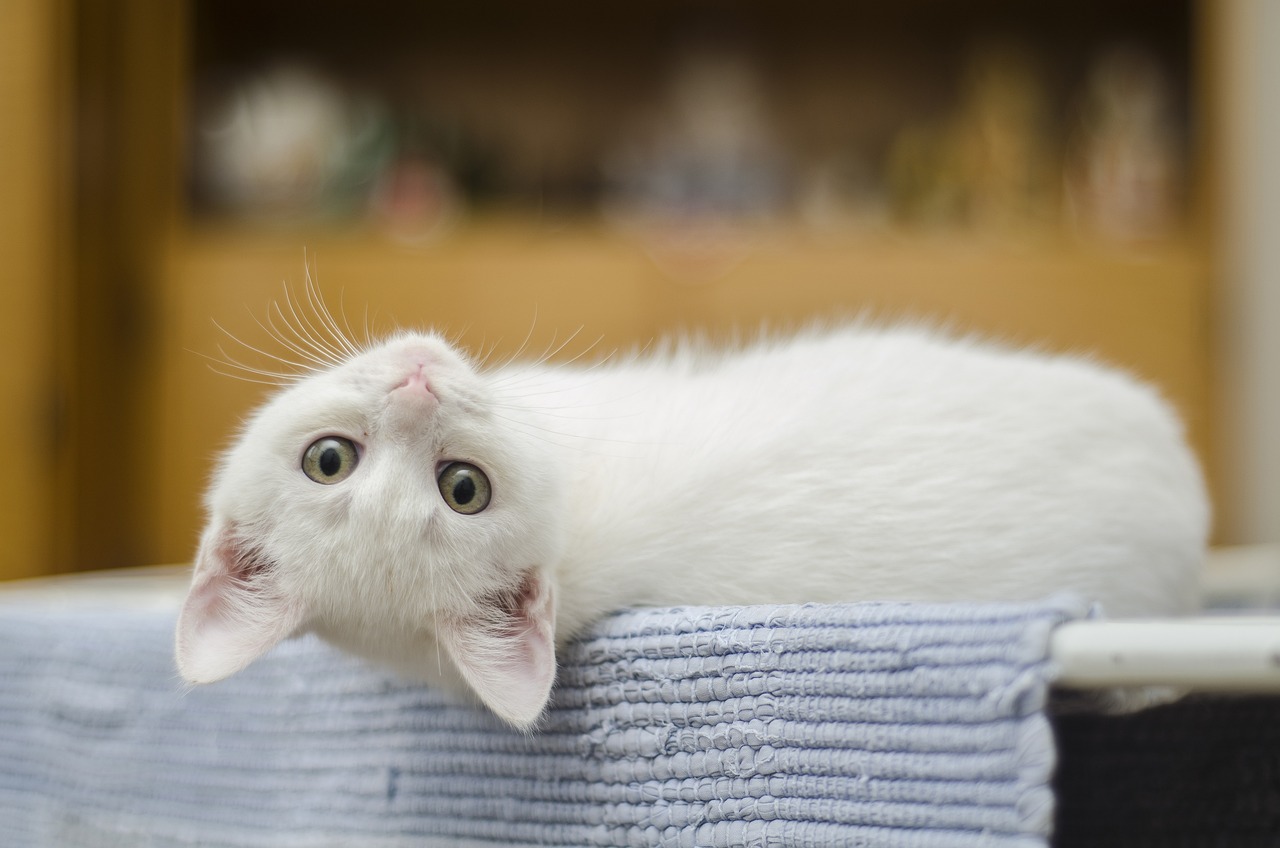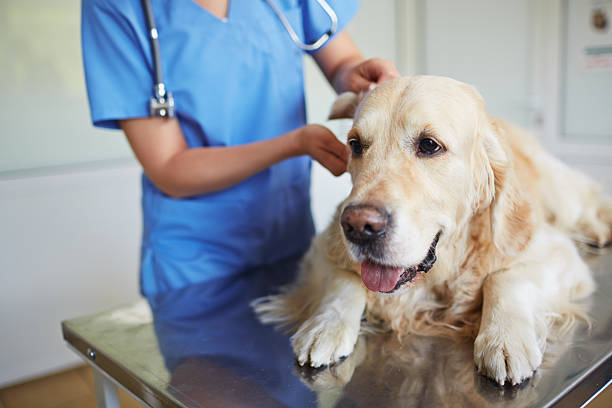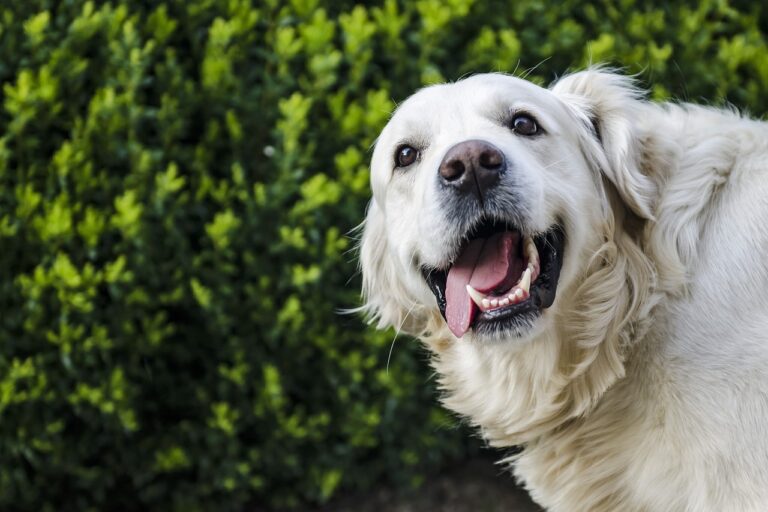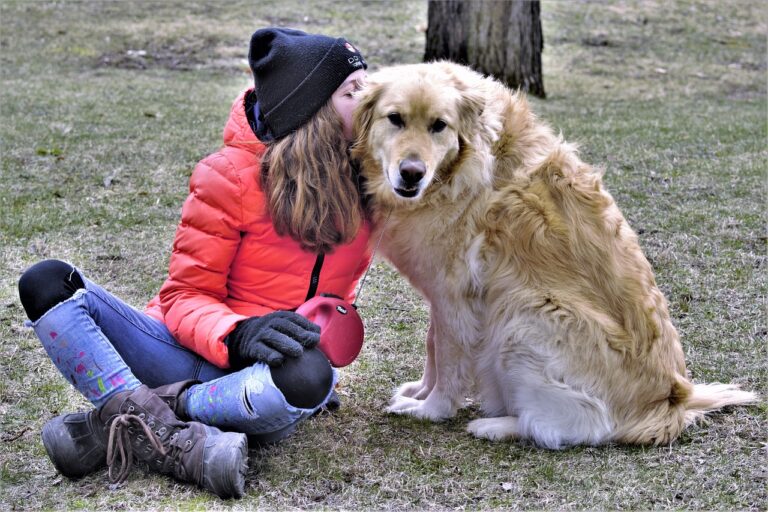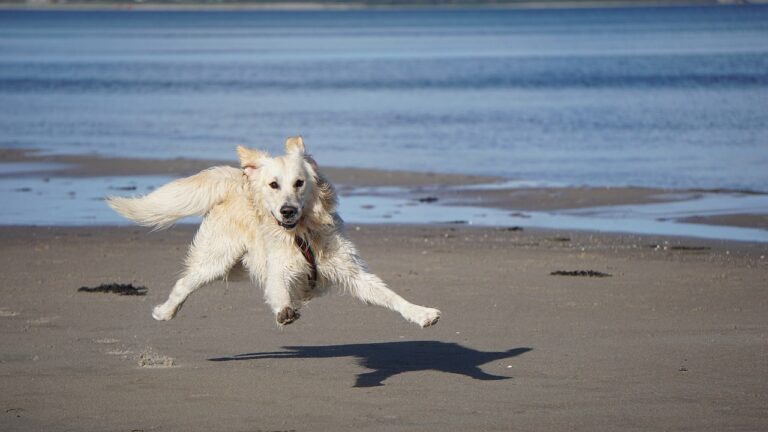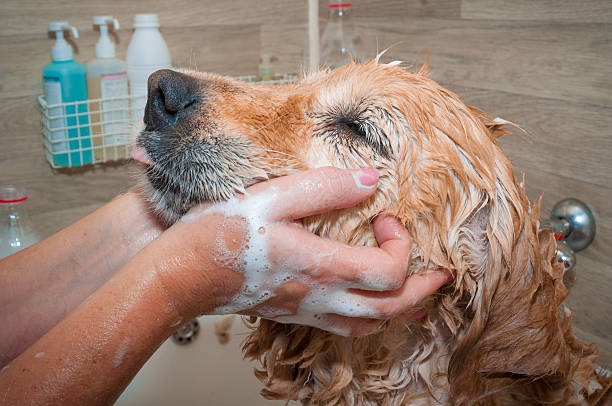Golden Retriever Integration 101: Creating a Happily Blended Multi-Pet Home
Considering a Golden Retriever
If you’re thinking about adding a new furry member to your multi-pet household, a Golden Retriever can be a wonderful choice. Known for their friendly nature and versatility, Golden Retrievers often integrate well into families with other pets. However, it’s important to consider a few key factors before making a decision.
Why Choose a Golden Retriever
Golden Retrievers are renowned for their friendly and outgoing personalities. They are known to be patient, gentle, and tolerant, making them great companions for both humans and other animals. Their sociable nature often allows them to form strong bonds with existing pets, creating a harmonious multi-pet environment.
These intelligent and eager-to-please dogs are also highly trainable, which can be beneficial when introducing them to other pets. Their willingness to learn and adapt makes it easier to establish positive interactions and prevent potential conflicts.
Additionally, Golden Retrievers are known for their love of water. This can be a great advantage if you have other pets who enjoy water-based activities. Golden Retrievers often excel in activities such as swimming, which can help foster a fun and engaging dynamic with your existing pets. For more information on Golden Retrievers and water activities, check out our article on Golden Retrievers and water: building a safe and fun relationship.
Is a Golden Retriever the Right Breed for Your Multi-Pet Home?
While Golden Retrievers have many wonderful qualities, it’s essential to assess whether they are the right fit for your multi-pet home. Here are a few considerations to keep in mind:
-
Size: Golden Retrievers are medium to large-sized dogs, so ensure that your home can comfortably accommodate their size and exercise needs. Assess whether your existing pets can handle the presence of a larger breed.
-
Energy Level: Golden Retrievers are active dogs that require regular exercise and mental stimulation. Consider the energy levels of your current pets and whether they can keep up with a high-energy breed. Taking your existing pets’ activity requirements into account will help ensure a compatible match.
-
Compatibility: Evaluate the temperament and sociability of your current pets. While Golden Retrievers generally get along well with other animals, it’s crucial to consider the individual personalities and preferences of your existing pets. Slow and supervised introductions will help gauge compatibility and allow for a smoother integration process.
By carefully considering these factors, you can determine if a Golden Retriever is the right breed for your multi-pet home. If you decide that a Golden Retriever is the right fit, proper preparation and introduction techniques will help set the stage for a harmonious coexistence. In the next sections, we will explore how to prepare your home and introduce your Golden Retriever to your existing pets.
Preparing for Integration
Before bringing a new Golden Retriever into your multi-pet home, it’s essential to take some preparatory steps to ensure a smooth integration process. This involves assessing your current pets and making necessary adjustments to create a welcoming environment for your new furry friend.
Assessing Your Current Pets
The first step in preparing for integration is to assess your current pets and their compatibility with a Golden Retriever. Consider their personalities, temperaments, and any previous experiences with other animals. Some pets may be more accepting of a new addition, while others may require more time and effort to adjust.
Take note of your current pets’ reactions to other animals, such as their behavior during encounters with other dogs or animals in your neighborhood. This can give you an indication of their potential compatibility with a Golden Retriever. If you have concerns about their behavior or aggression towards other animals, it may be helpful to consult a professional animal behaviorist for guidance.
Preparing Your Home for a New Golden Retriever
Creating a safe and comfortable space for your new Golden Retriever is crucial for a successful integration. Here are some steps to prepare your home:
-
Secure your space: Ensure that your home is securely fenced or has appropriate boundaries to prevent your pets from wandering off or encountering any potential dangers outside.
-
Designate separate spaces: Create separate areas for each pet in your home, including designated sleeping areas, feeding stations, and personal spaces. This allows each pet to have their own safe haven and reduces the likelihood of territorial disputes.
-
Provide sufficient resources: Ensure that you have enough resources, such as food bowls, water bowls, toys, and beds, to accommodate all your pets. It’s important to provide multiple resources to avoid competition and potential conflicts.
-
Introduce scents: Before the actual introduction, you can start by exchanging bedding or toys between your current pets and the Golden Retriever. This allows them to become familiar with each other’s scents, helping to create a sense of familiarity and comfort.
-
Remove potential hazards: Identify and eliminate any potential hazards in your home that could pose a risk to your pets. This includes removing toxic plants, securing loose wires, and storing hazardous materials out of reach.
By assessing your current pets and making the necessary preparations, you can create a welcoming environment for your new Golden Retriever and ensure a smoother integration process. Remember, patience and positive reinforcement are key during this transition period. With time and proper introductions, your pets can develop a harmonious and happy relationship.
Introducing Your Golden Retriever to Existing Pets
Bringing a new Golden Retriever into a home with existing pets requires careful introductions and a gradual process to ensure a smooth transition. Here are two important aspects to consider during this integration phase: supervised meetings and controlled interactions, as well as patience and positive reinforcement.
Supervised Meetings and Controlled Interactions
When introducing your Golden Retriever to your existing pets, it’s crucial to supervise their initial meetings and ensure controlled interactions. This allows everyone involved to become familiar with each other’s presence in a safe and controlled environment. Here are a few tips to help you manage these meetings:
-
Separate spaces: Initially, keep your new Golden Retriever and your existing pets in separate spaces, such as separate rooms or areas divided by baby gates. This allows them to see and smell each other without direct physical contact.
-
Leashed introductions: When you feel ready to introduce them face-to-face, keep your Golden Retriever on a leash and allow your existing pets to approach at their own pace. This helps to prevent any sudden or overwhelming interactions that may cause stress or anxiety.
-
Positive reinforcement: Reward calm and appropriate behavior from both your Golden Retriever and your existing pets during these meetings. Use treats, praise, and affection to reinforce good behavior and create positive associations.
-
Short and gradual interactions: Keep the initial meetings short and gradually increase their duration over time. This allows everyone to adjust to each other’s presence at a comfortable pace. If any signs of discomfort or tension arise, separate them and try again later.
Patience and Positive Reinforcement
Patience is key when integrating a Golden Retriever into a multi-pet household. Remember that each pet has their own temperament and adjustment period. Here are some additional steps to ensure a positive integration:
-
Individual attention: Continue to provide individual attention and quality time to each pet. This helps to alleviate any feelings of jealousy or neglect and reinforces the bond between you and your existing pets.
-
Training sessions: Engage in training sessions with your Golden Retriever and existing pets separately. This not only helps them learn essential commands and behaviors but also provides mental stimulation and a positive outlet for their energy.
-
Positive reinforcement: Reward good behavior and positive interactions between your Golden Retriever and your existing pets. This can be done through treats, praise, and playtime. Positive reinforcement helps to build trust and harmony among all your pets.
-
Gradual integration: Introduce your Golden Retriever to different areas of the house gradually. This allows them to become familiar with the shared spaces and reduces territorial conflicts. Ensure that each pet has their own safe space where they can retreat if needed.
By following these strategies of supervised meetings, controlled interactions, patience, and positive reinforcement, you can help foster a harmonious relationship among your Golden Retriever and existing pets. Remember that every pet is unique, and the integration process may take time. With consistency, understanding, and love, you can create a happily blended multi-pet home.
Addressing Common Integration Challenges
Integrating a Golden Retriever into a multi-pet household can come with its own set of challenges. Understanding and addressing these challenges is essential to ensure a harmonious environment for all your furry friends. Here are three common integration challenges you may encounter and strategies for addressing them:
Resource Guarding
Resource guarding occurs when a dog becomes possessive of certain items, such as food, toys, or even sleeping areas. This behavior can lead to conflicts and tension among your pets. To address resource guarding:
- Management: Initially, separate your pets during meal times and provide them with their own separate feeding areas. This helps prevent potential conflicts over food resources.
- Positive Reinforcement: Gradually introduce positive reinforcement training to teach your Golden Retriever and other pets that sharing resources leads to rewards. Start with small, low-value items and gradually progress to more valuable ones.
- Supervision: Monitor your pets during playtime and ensure that all interactions involving resources are positive and peaceful. If any signs of resource guarding arise, intervene calmly and redirect their attention.
Territory Issues
When introducing a new pet, territorial issues may arise as pets establish their boundaries. To address these issues:
- Gradual Introductions: Introduce your Golden Retriever to specific areas of your home gradually, allowing all pets to become familiar with each other’s scents. This helps reduce territorial behavior and promotes a smoother integration process.
- Neutral Ground: Consider introducing your pets in a neutral space, such as a park or a friend’s yard, to minimize territorial instincts.
- Equal Attention: Ensure that each pet receives equal attention and affection to prevent feelings of jealousy or competition over territory.
Jealousy and Attention Seeking
When a new pet enters the household, existing pets may experience feelings of jealousy or seek additional attention from their owners. To address these challenges:
- Individual Time: Dedicate quality one-on-one time with each pet to reassure them of their importance and maintain their bond with you. This helps alleviate feelings of jealousy and attention-seeking behaviors.
- Positive Reinforcement: Reward desirable behaviors displayed by each pet, such as calm and patient interactions with the new Golden Retriever. This reinforces positive associations and reduces attention-seeking behavior.
- Enrichment Activities: Provide mental and physical stimulation through interactive toys, puzzle feeders, and exercise. This helps redirect excessive attention-seeking behavior and provides a healthy outlet for energy.
By addressing common integration challenges like resource guarding, territorial issues, and jealousy, you can promote a harmonious environment for your Golden Retriever and other pets. Remember, patience and positive reinforcement are key to fostering positive relationships among your furry family members. For more information on creating a happy multi-pet home, explore our article on the benefits of training classes for Golden Retrievers.
Creating a Harmonious Multi-Pet Home
When integrating a Golden Retriever into a multi-pet household, creating a harmonious environment is essential for the well-being of all your pets. Establishing a routine and structure, providing individual attention, and focusing on training and socialization are key factors in achieving a peaceful coexistence.
Establishing a Routine and Structure
Creating a consistent routine and structure is crucial when introducing a Golden Retriever to your existing pets. Dogs thrive on predictability, and a well-established routine helps reduce stress and anxiety for all pets involved. Consider the following aspects when establishing a routine:
- Feeding Schedule: Set regular feeding times for all pets and ensure that each pet has their own designated feeding area to prevent food guarding or territorial behavior.
- Walks and Exercise: Implement a consistent exercise routine for your Golden Retriever and other pets. Regular walks and play sessions help release energy and promote positive interactions.
- Rest and Quiet Time: Provide separate resting areas for each pet to ensure they have a safe space to relax and recharge. This can help prevent conflicts and give pets the opportunity for individual downtime.
By following a structured routine, you create a sense of stability and predictability for your pets, fostering a harmonious multi-pet home environment.
Providing Individual Attention
While it’s important to focus on the collective needs of your pets, providing individual attention is equally crucial. Each pet has unique requirements for social interaction, exercise, and mental stimulation. Here’s how you can ensure that each pet receives the attention they need:
- Quality Time: Spend one-on-one time with each pet to strengthen your bond and meet their specific needs. This can include play sessions, grooming, or simply cuddling.
- Training Sessions: Engage in individual training sessions with each pet, including your Golden Retriever. Not only does this provide mental stimulation, but it also establishes a positive and rewarding relationship between you and your pets.
- Separate Attention: Ensure that each pet receives attention when they desire it. This may involve rotating interactions or providing separate spaces where pets can have undisturbed time with you.
By addressing the individual needs of your pets, you demonstrate that they are valued members of your family, fostering an environment of mutual respect and understanding.
Training and Socialization
Training and socialization are vital components of integrating a Golden Retriever into a multi-pet home. Proper training promotes good behavior, establishes boundaries, and helps prevent conflicts. Consider the following tips:
- Basic Commands: Teach your Golden Retriever and other pets basic commands such as sit, stay, and leave it. This promotes obedience and enhances communication between you and your pets.
- Positive Reinforcement: Use positive reinforcement techniques, such as treats and praise, to reward desired behavior. This encourages your pets to repeat positive actions and establishes a cooperative dynamic.
- Gradual Introductions: Gradually introduce your Golden Retriever to other pets in a controlled and supervised manner. Allow them to become familiar with each other’s scents and gradually increase the duration and proximity of their interactions.
Socialization is equally important. Expose your Golden Retriever to various environments, people, and animals to ensure they develop into well-rounded and confident dogs. For more information on training, refer to our article on the benefits of training classes for Golden Retrievers.
By investing time and effort into training and socialization, you can foster positive relationships among your pets, creating a harmonious multi-pet home where they can coexist happily.
Remember, integrating a Golden Retriever into a multi-pet home requires patience, understanding, and consistent effort. By establishing routines, providing individual attention, and focusing on training and socialization, you can create an environment where your Golden Retriever and other pets thrive together.
Enjoying Life with Your Golden Retriever and Other Pets
Once you have successfully integrated your Golden Retriever into your multi-pet household, it’s time to focus on creating a harmonious and enjoyable environment for all your pets. Here are some activities for bonding and exercise, as well as tips for monitoring and maintaining a peaceful environment.
Activities for Bonding and Exercise
Bonding with your Golden Retriever and other pets is essential for building strong relationships and a sense of unity within your household. Here are some activities that can help facilitate bonding and provide much-needed exercise for your pets:
-
Group Walks: Take your Golden Retriever, along with your other pets, for regular walks together. This not only provides physical exercise but also allows them to explore the surroundings as a pack.
-
Playtime: Engage in interactive play sessions with all your pets. Use toys, such as balls or frisbees, to encourage active play. Rotate the toys to keep things interesting and prevent any potential resource guarding behavior.
-
Training Sessions: Incorporate training sessions into your routine. This not only helps in teaching your Golden Retriever new commands but also provides mental stimulation for all your pets. Use positive reinforcement techniques to encourage good behavior.
-
Socialization Opportunities: Arrange playdates or visits with other friendly dogs or pets in a controlled environment. This allows your Golden Retriever and other pets to interact and socialize, fostering positive relationships.
Remember to always monitor the interactions between your pets during these activities and intervene if any signs of aggression or discomfort arise. Each pet is unique, so be mindful of their individual needs and temperaments.
Monitoring and Maintaining a Peaceful Environment
Maintaining a peaceful environment is crucial for the overall well-being of your pets. Here are some tips to help you monitor and promote a harmonious atmosphere:
-
Provide Individual Space: Ensure that each pet has their own designated space where they can retreat and have some alone time. This can be a separate room, a cozy bed, or a crate. Respect their need for personal space and avoid forcing interactions.
-
Supervise Interactions: Even if your pets get along well, it’s important to supervise their interactions, especially in the early stages of integration. This allows you to intervene if any conflicts arise and prevent potential issues from escalating.
-
Address Resource Guarding: Resource guarding, where pets become possessive over food, toys, or other items, can lead to conflicts. Manage this behavior by providing separate feeding areas and ensuring an ample supply of toys and resources for all pets. For more information on addressing resource guarding, refer to our article on resource guarding.
-
Maintain a Consistent Routine: Establish a daily routine for feeding, exercise, and playtime. Consistency and predictability help reduce stress and promote a sense of security for your pets.
-
Seek Professional Help if Needed: If you encounter persistent conflicts or challenges in maintaining a peaceful environment, consider consulting a professional animal behaviorist or trainer who specializes in multi-pet households. They can provide guidance tailored to your specific situation.
By engaging in bonding activities and maintaining a peaceful environment, you can foster strong relationships between your Golden Retriever and other pets. Remember, patience, positive reinforcement, and consistent monitoring are key to creating a happy and harmonious multi-pet home.
